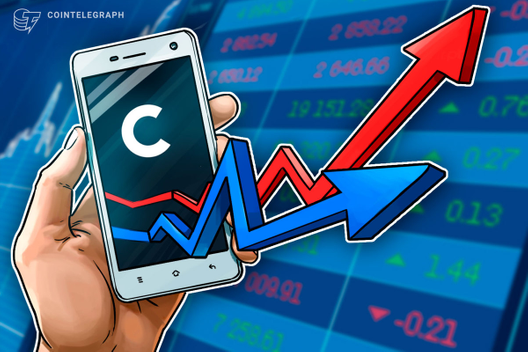Qtum price rallies 160% as the project’s focus on DeFi pays off
After rallying 1.510% in 2021, QTUM price hit a $35.70 all-time high on May 7. This relatively obscure altcoin launched in September 2017 is a fork of the Bitcoin Core 0.13 version, but it also integrates the Ethereum virtual machine (EVM) and smart contract execution capability.
Following Bitcoin’s (BTC) April 23 crash down to $47,500, QTUM faced a 52% correction in 4 days before bottoming at $10. However, the situation for the altcoin improved on May 5 as QTUM initiated a 160% rally in two days, reaching the $35.70 peak.

Qtum combines Bitcoin’s transaction model with Ethereum smart contracts
The open-source platform’s primary goal is to provide simple tools that anyone can use to create decentralized applications (dApps) while maintaining a high level of network security. The project opted for a slightly different Proof of Stake (POS) version to prevent malicious nodes, and a certain number of blocks are needed for the staking tokens to become valid.
Qtum blockchain supports smart contract programming languages beyond Solidity, besides having an on-chain decentralized governance protocol. Token holders vote on network parameters such as block size and base gas fee.
While Qtum blockchain features an on-chain governance system, it also has an off-chain process for approving and handling more significant protocol changes. The protocol has recently identified decentralized finance (DeFi) as a focus area and steps to attract new projects.
This strategy seems to be finally paying off, as the number of daily network transactions peaked on May 6.

Staking improvements and DeFi pivot send Qtum price higher
Offline staking was implemented in August 2020, and it has grown to more than half the staking activity on the Qtum blockchain. Investors who don’t want to handle their own nodes can make a non-custodial delegation for their coins.
On March 17, Value Network announced plans to migrate away from Ethereum due to network congestion and high costs. It is now moving to the Qtum smart contract and DApp platform and has received a development grant to accelerate the transition.
On March 31, Qtum founder Patrick Dai said that the protocol was working to enable smart contracts for Filecoin (FIL) through the Qtum network.
The network transitioned from a 128-second block average to a 32-second block average via a hard fork on April 30. The average four weeks that it took for an average-size staker to become valid now has been reduced to a single week.
Ethereum compatibility means increased interoperability
Interoperability is another reason for QTUM’s recent rally. The team is developing Neutron, an agnostic interface that allows virtual machines to run on multiple blockchains. Moreover, its own DEX called QiSwap enables users to build DeFi applications and provide liquidity on top of the Qtum blockchain.
VORTECS™ data from Cointelegraph Markets Pro began to detect a bullish outlook for QTUM on May 5, before the recent price rise.
The VORTECS™ Score, exclusive to Cointelegraph, is an algorithmic comparison of historical and current market conditions derived from a combination of data points, including market sentiment, trading volume, recent price movements, and Twitter activity.

As seen in the chart above, the VORTECS™ Score began to climb on May 5 and reached a high of 71. It’s worth noting that the VORTECS™ Score peaked roughly 24 hours before the price spiked 100% to a new all-time high at $35.70.
Qtum is aiming to compete with some serious smart contract contenders like Cardano (ADA), Polkadot (DOT), VeChain (VET), and Solana (SOL) and the project has an impressive $2.74 billion market capitalization.
However, for QTUM to increase its valuation, investors will likely want to see more decentralized applications and total value locked (TVL) on the network.
The views and opinions expressed here are solely those of the author and do not necessarily reflect the views of Cointelegraph. Every investment and trading move involves risk. You should conduct your own research when making a decision.








